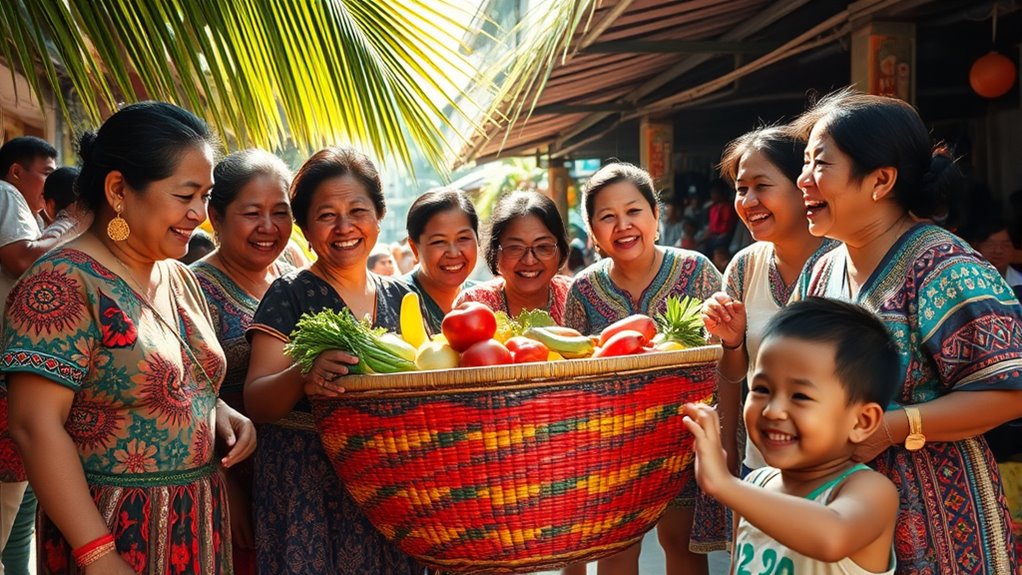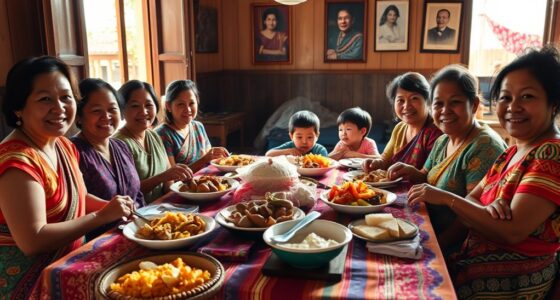Filipina women cherish community ties because these connections nurture resilience and foster a sense of belonging. They engage in lively fiestas, share stories through kwentuhan, and celebrate diverse regional cuisines that reflect their rich cultural heritage. Women play pivotal roles in maintaining family dynamics and creating inclusive environments. These strong bonds help elevate their communities, reinforcing shared values. There’s much more to uncover about the significance of these ties and how they shape identity.
Key Takeaways
- Filipina women often play matriarchal roles, influencing family decisions and promoting stability within their communities.
- Community ties provide emotional support and foster resilience during challenges, reinforcing the importance of togetherness.
- Engaging in cultural practices, like fiestas and kwentuhan, strengthens bonds and preserves shared heritage among women.
- Networking with other women enhances opportunities in business and leadership, empowering them to challenge traditional norms.
- Strong community connections promote a sense of belonging, helping women navigate life’s transitions with collective wisdom and support.
The Significance of Fiestas in Community Building
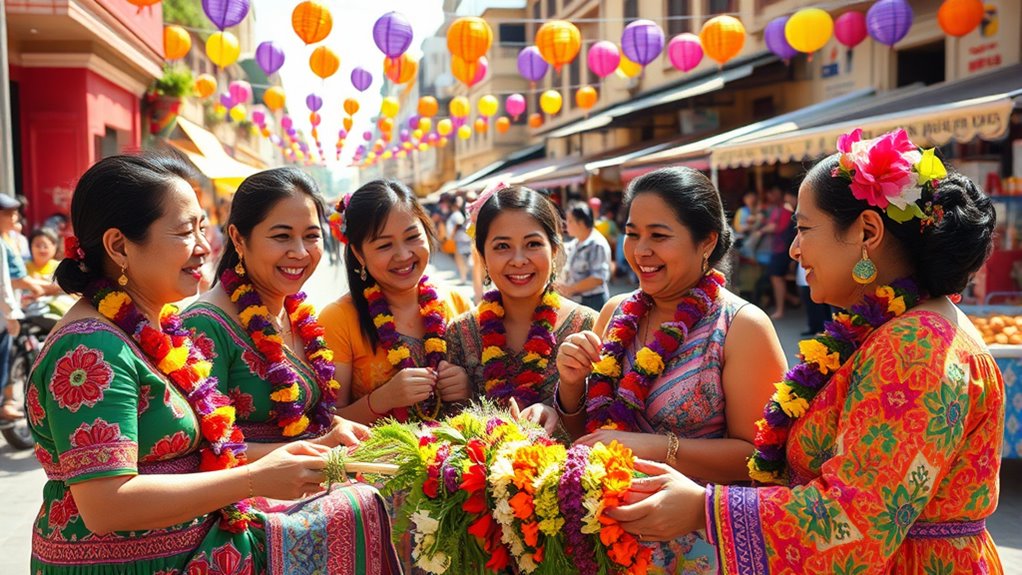
When you think about community building in the Philippines, fiestas stand out as a vibrant demonstration of collective spirit and unity.
These colorful celebrations draw together locals and visitors, creating a sense of belonging through shared traditions. The lively decorations, like banderitas, enhance communal pride and foster a welcoming atmosphere.
Engaging in festive activities not only builds camaraderie but also creates lasting memories among participants. Fiestas promote inclusivity, inviting people of all backgrounds to join in the fun.
Participating in fiestas fosters connections and unforgettable memories, welcoming everyone to share in the joy and celebration.
The religious aspects strengthen spiritual connections, while food offerings highlight the importance of hospitality and generosity.
Celebrating Culinary Diversity Through Regional Dishes
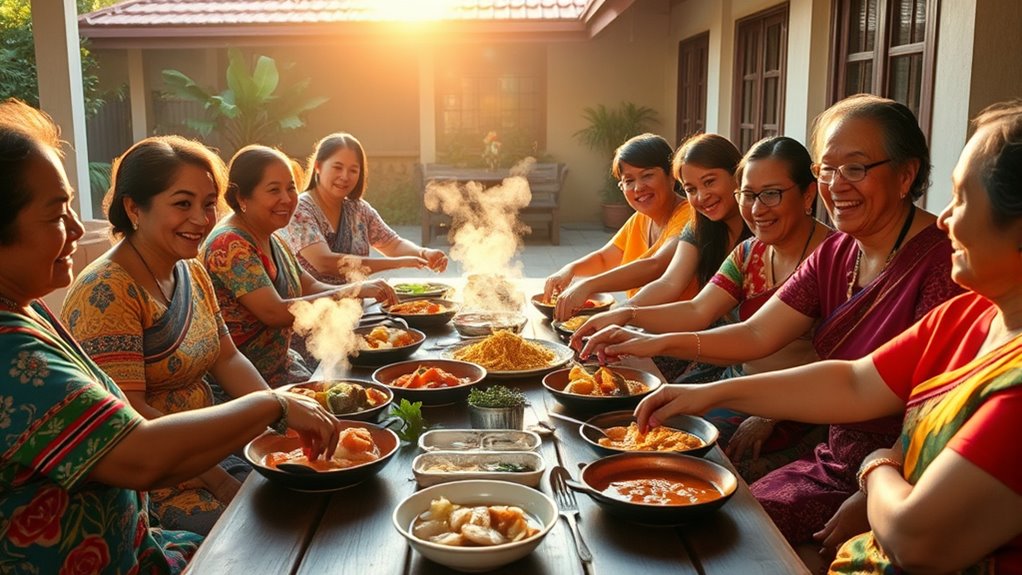
As you explore the rich tapestry of Filipino cuisine, you’ll discover that each region offers its own unique flavors and dishes, reflecting the diverse cultural influences that have shaped the archipelago.
Northern Luzon boasts hearty favorites like bagnet, while Central Luzon tempts with savory delights such as sisig and halo-halo.
Southern Luzon’s Bicol Express brings the heat with its spicy coconut milk base.
In the Visayas, you can savor the tangy beef marrow soup, kansi, and Mindanao showcases a fusion of cultures through its varied culinary offerings.
Each dish tells a story, revealing the local ingredients and traditions passed down through generations, making Filipino cuisine a true celebration of regional diversity and heritage.
The Role of Kwentuhan in Strengthening Bonds
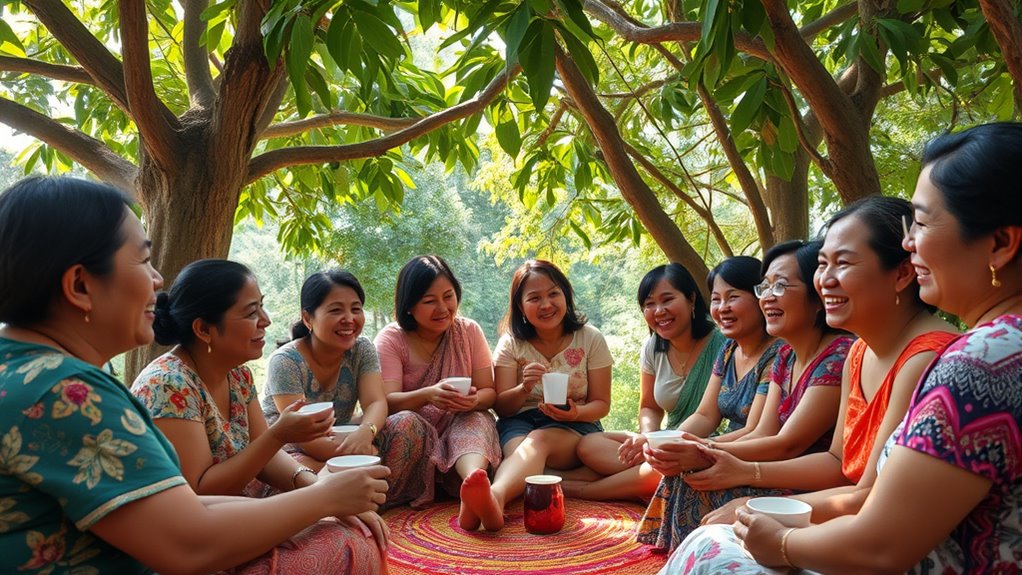
Filipino cuisine isn’t just about the food; it’s a gateway to understanding the culture and community that thrives around it.
One significant aspect of this culture is kwentuhan, a storytelling tradition that strengthens bonds among community members. When you share stories, you connect emotionally, fostering empathy and understanding. These narratives reflect shared experiences and struggles, creating a sense of belonging.
Kwentuhan also bridges generational gaps, allowing wisdom and values to flow from elders to the youth. This shared practice not only preserves history and heritage but also nurtures a supportive environment for personal expression.
As you engage in kwentuhan, you deepen social ties, enriching both individual lives and the community as a whole.
Preserving Filipino Identity Through Community Practices

Preserving Filipino identity thrives through community practices that celebrate culture and heritage. You’ll find that legal protections, like the Indigenous Peoples’ Rights Act, empower communities to manage their cultural resources.
Education initiatives integrate indigenous knowledge into curricula, ensuring younger generations appreciate their roots. Traditional festivals, such as Panagbenga, unite people, showcasing shared traditions and fostering bonds.
Supporting artisans helps keep traditional crafts alive, reinforcing cultural identity while promoting sustainable practices. Additionally, urban planning that respects historical sites can blend modern living with cultural preservation.
Engaging communities in these efforts lays a foundation for collective ownership and pride in their heritage. By participating in these practices, you actively contribute to the vibrant tapestry of Filipino identity.
Unity Among Diverse Regions of the Philippines

While the Philippines boasts a rich tapestry of ethnic diversity, it’s the unity among its varied regions that truly defines the nation. You’ll notice that with over 182 ethnolinguistic groups, each region has its own unique identity, yet they come together to celebrate shared values.
Tagalog might be the largest group, but cultural exchanges among regions foster a sense of belonging. Festivals highlight local traditions, strengthening community ties and reinforcing national pride.
Economic integration and coordinated disaster relief efforts show that unity thrives in action. Historical movements for independence have further united Filipinos, creating a shared narrative. This shared narrative is essential for fostering environments that enhance the quality of life for all, especially the elderly.
Ultimately, despite challenges like regional disparities, the commitment to unity across diverse regions remains strong and vibrant.
The Matriarchal Influence on Society and Family Roles
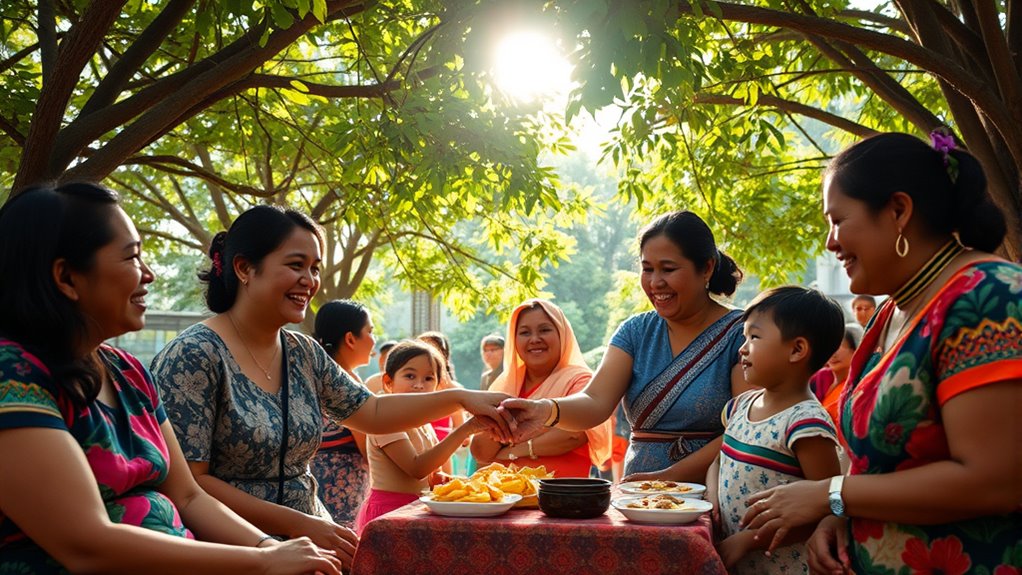
Matriarchy plays an important role in shaping the dynamics of society and family in the Philippines. Despite the macho image, women hold significant positions in business and politics, reflecting their historical power.
In pre-colonial times, women enjoyed equal status, actively participating in trade and leadership. Today, the matriarch, often the grandmother, manages family finances and influences educational and career choices. Additionally, as they guide family members through life transitions, they also prioritize early detection of health issues, ensuring timely interventions. This nurturing role often includes support systems that help family members cope with emotional challenges. The ability to create effective co-parenting plans is also essential, as it fosters collaboration among family members during transitions.
This strong presence extends beyond the household, as women challenge traditional norms by taking on leadership roles in society. Their involvement guarantees stability and promotes social cohesion, reinforcing community ties.
As leaders, they navigate familial responsibilities while contributing to the economy, shaping a society where women’s strength and independence remain crucial. Furthermore, the significance of advance directives in planning for the future ensures that families are prepared for any unexpected circumstances.
Family Support in Behavioral Health for Adolescents

Family plays a pivotal role in the behavioral health of adolescents, greatly influencing their emotional well-being. When families are cohesive, they provide a supportive environment that fosters open communication and trust. This connection helps you navigate challenges related to self-esteem, stress, and depression.
Conversely, lower family cohesion can increase mental health issues and stress levels. Strong parent-child relationships are essential, as they create a safe space for discussing feelings. However, fear of negative reactions can hinder communication, highlighting the importance of a gentle approach.
Tailored parenting programs can enhance these dynamics, promoting healthier interactions. By strengthening family ties, you not only improve your mental health but also contribute to a supportive community network that benefits all adolescents.
Communication Styles Shaped by Cultural Norms
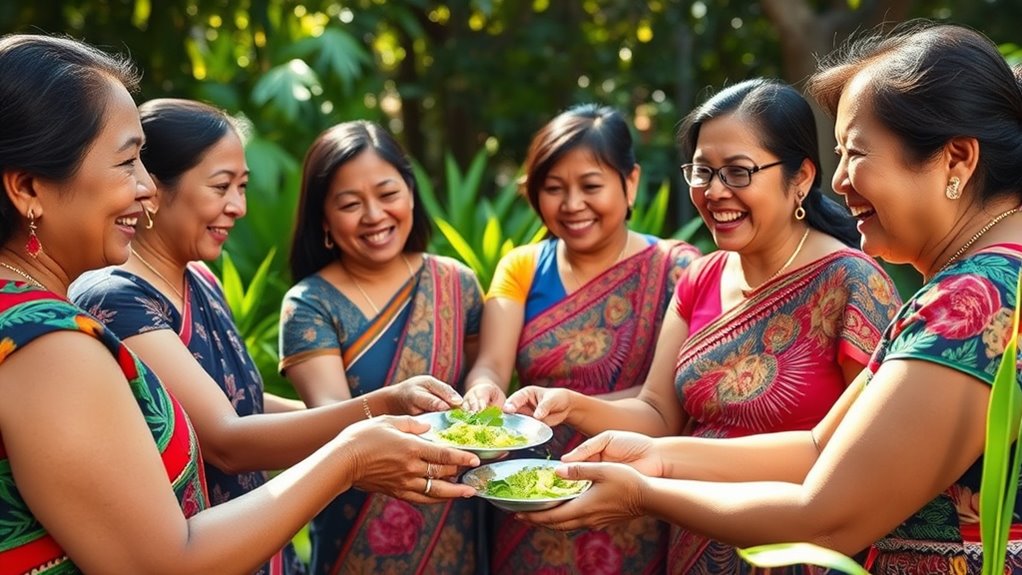
Understanding communication styles shaped by cultural norms is essential, especially in a diverse society like the Philippines.
Exploring communication styles in the Philippines reveals the profound influence of cultural norms in fostering connection and understanding.
You’ll notice that Filipinos often communicate indirectly, prioritizing politeness and respect. Phrases like “salamat po” reflect this cultural emphasis. Nonverbal cues, such as nods and smiles, signal agreement or interest.
The value of *pakikisama* drives communication strategies that promote social harmony and avoid conflict. Humor plays a crucial role in diffusing tension, fostering camaraderie, and aligning group values.
*Utang na loob* highlights the importance of gratitude and reciprocity, ensuring relationships remain strong. Additionally, the warmth and hospitality inherent in Filipino communication create an inviting atmosphere, encouraging engagement and community interaction.
Understanding these styles deepens your appreciation for the rich cultural fabric of the Philippines, and developing cultural intelligence (CQ) can enhance cross-cultural interactions in this vibrant society.
The Global Filipino Identity and Community Connections
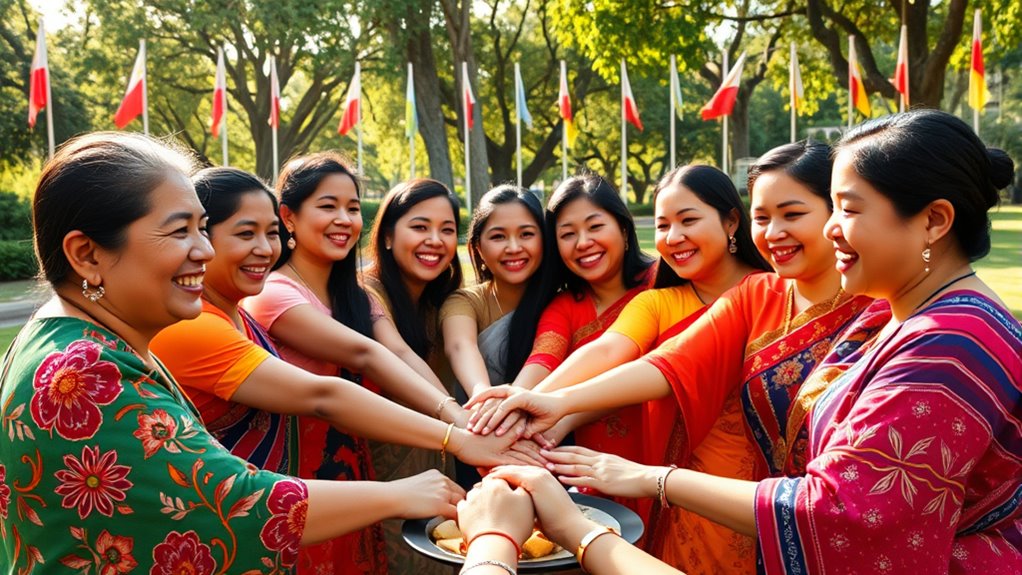
As globalization continues to shape societies, the Filipino identity emerges as a dynamic blend of traditional values and modern influences.
You’ll notice that Filipinos prioritize community and family over individualism, reflecting a strong collectivist mindset. Colonial history has layered the identity with diverse influences, from Malay to Spanish, while Christianity fosters tight-knit bonds through shared values.
As you engage with the global Filipino community, you’ll see how cultural exchanges enrich identities while preserving heritage. Hospitality, respect, and generosity define interactions, reinforcing community ties.
Yet, challenges like cultural appropriation and external perceptions complicate identity formation. Despite these obstacles, efforts to reclaim narratives and celebrate local pride help maintain a sense of belonging, uniting Filipinos worldwide.
Frequently Asked Questions
How Do Filipina Women Maintain Friendships Across Different Regions?
You maintain friendships across different regions by participating in cultural events like fiestas, where you enjoy traditional food and music together.
Family gatherings strengthen your bonds, as they often include extended relatives and friends.
Engaging in storytelling or *kwentuhan* keeps you updated on each other’s lives.
Additionally, community activities provide shared goals that foster cooperation and trust, allowing you to connect with others and nurture those valuable relationships over time.
What Challenges Do Filipina Women Face in Community Leadership Roles?
Filipina women face several challenges in community leadership roles. You might encounter societal expectations that prioritize home responsibilities over professional ones, limiting your availability.
Unpaid care work and financial constraints can further restrict your participation. Additionally, lack of family support, especially from husbands, may hinder your involvement.
Cultural biases still exist, making it harder to break through glass ceilings. Despite these challenges, many women are finding ways to lead and inspire change.
How Does Migration Affect Community Ties Among Filipinas?
How does migration reshape the bonds you share within your community? When you migrate, you often leave behind family and friends, which can strain those connections.
Yet, you also create new relationships abroad, fostering networks that support both your well-being and your community back home through remittances.
These ties can empower you and your peers, but they also bring emotional challenges, especially when reintegrating after long absences.
Balancing these dynamics becomes essential for your community ties.
What Role Do Technology and Social Media Play in Community Connections?
Technology and social media play an essential role in strengthening community connections. You can easily connect with friends and family through platforms like Facebook, which helps maintain ties despite distance.
Engaging in groups focused on shared interests enhances your sense of belonging. Additionally, using apps like Messenger keeps communication flowing, ensuring you stay updated.
How Do Cultural Differences Impact Community Engagement for Filipina Women Abroad?
Cultural differences can greatly impact your community engagement as a Filipina woman abroad. You might face challenges like language barriers or differing social norms that make it tough to connect.
However, these differences can also motivate you to find common ground and build relationships. By embracing your heritage while adapting to new cultures, you create a supportive network that enriches your experience and fosters a sense of belonging in unfamiliar environments.
Conclusion
In a world that often feels disconnected, Filipina women remind us of the power of community ties. Through vibrant fiestas, shared meals, and heartfelt kwentuhan, they weave a tapestry of unity that transcends regional differences. Their matriarchal influence nurtures not just families, but the very fabric of society itself. As you reflect on these connections, consider: what might you discover about your own community ties if you dared to dive deeper? The answer could surprise you.
